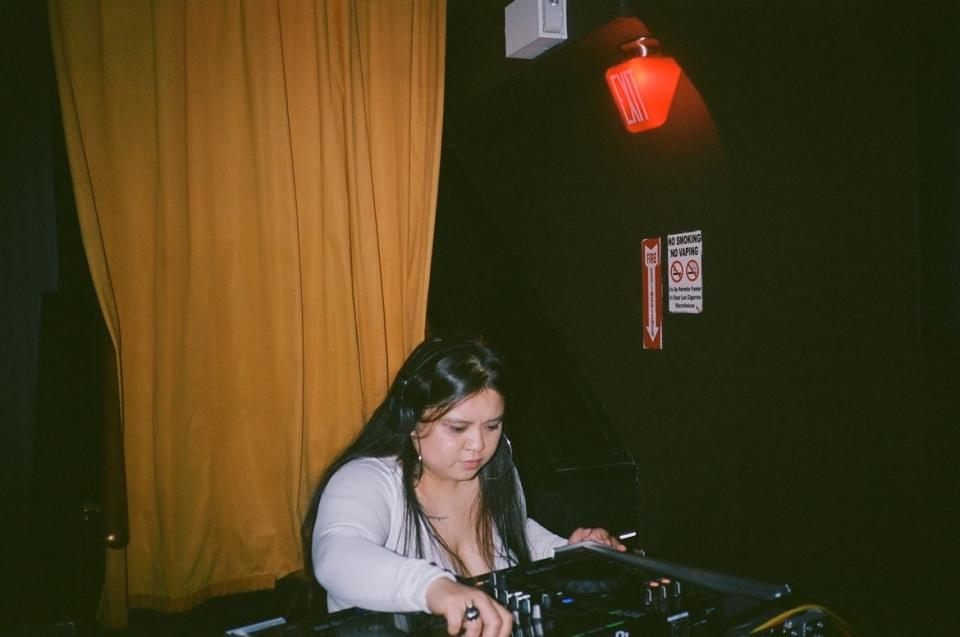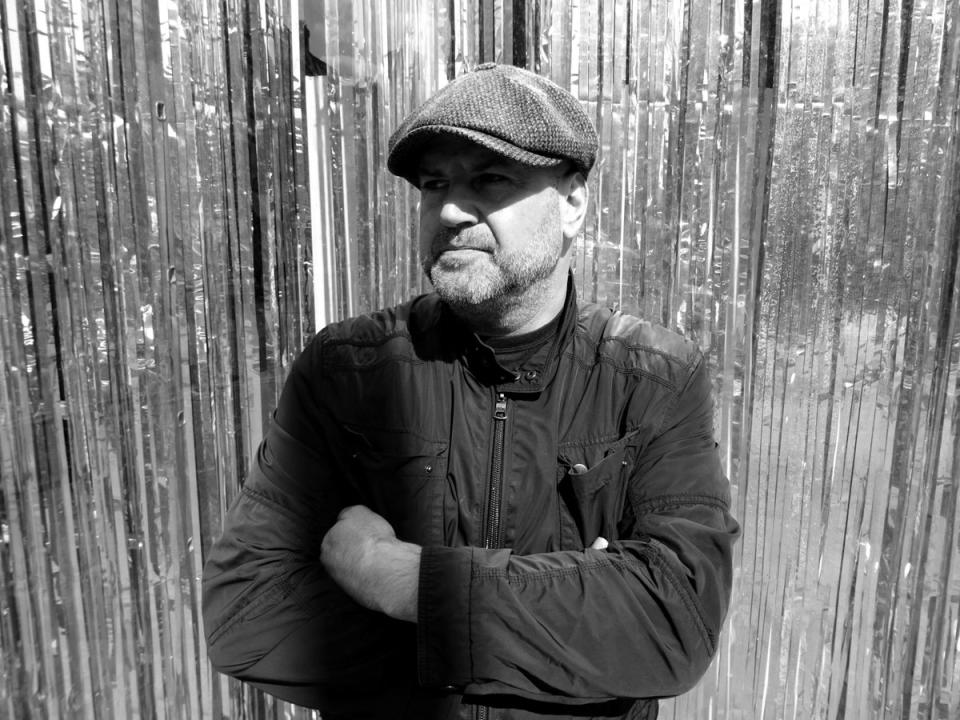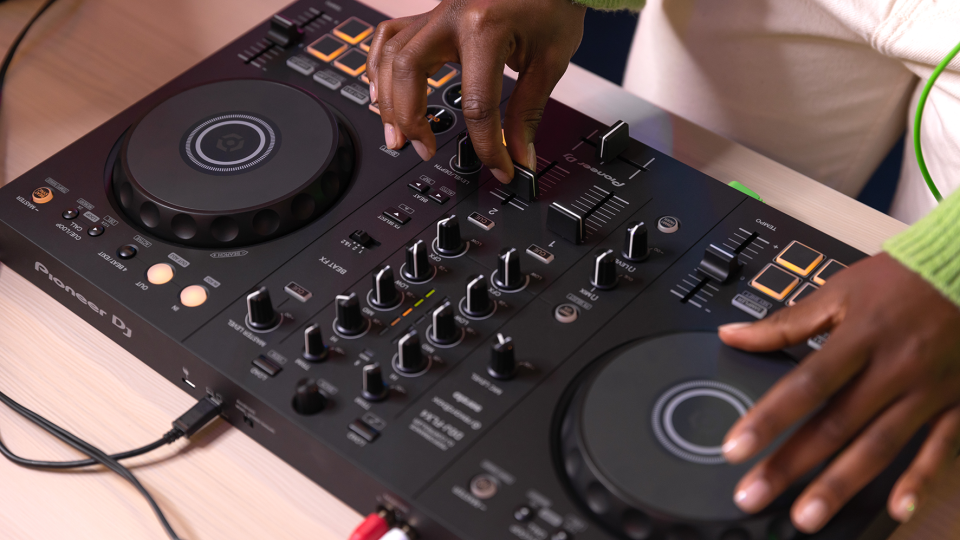"People definitely read into it too deeply, but that's how Twitter goes": What exactly is 'mixing in key' and why have DJs been arguing over it?

- Oops!Something went wrong.Please try again later.
Recently, promoter, journalist and DJ Arielle Lana LeJarde took one of the most important steps on the journey to international DJ stardom when she created her very own DJ Twitter discourse.
Posting a photo of the ‘Camelot Wheel’ - a visual representation of the harmonic compatibility of musical keys used to aid harmonic DJ mixing - with the lighthearted caption “mixing in key you will Crumble”, she kicked off a lengthy discussion on DJ Twitter on the concept of harmonic mixing, or mixing in key.
(Quick caveat: this isn’t an article about the right way to DJ; if you’re content not considering music theory in connection with your DJing, or if you’re well-schooled in music theory and love all this stuff, or indeed if you fall somewhere between both those positions, it’s all equally valid: there’s room for us all in DJing world).
Mixing in what now?
Mixing in key or harmonic mixing simply refers to blending two songs together that are in compatible musical keys and which therefore sound great together. And the inverse of this is that mixing two songs that are in wildly different keys can sometimes sound awful, the harmonic equivalent of the tunes slipping out of time - a harmonic clang if you will.
Mixing in key or harmonic mixing simply refers to blending two songs together that are in compatible musical keys and which therefore sound great together
Mixing in key doesn't necessarily mean mixing into the exact same key each time, but also related keys that share notes with the original key. So, to momentarily digress into some very basic music theory, blending a tune in the key of C Major into A Minor will sound better than blending C Major into C♯ Major, as C Major and A Minor share more notes (all of their notes, in fact) than C Major and C♯ Major.
Producer, DJ, promoter and founder of the Parallel Minds label Ciel often uses harmonic mixing in her DJ sets and told us, “Most people can't tell that it's happening, I think they just notice that it's really nice but can't really put their fingers on what is happening - it just sounds more pleasing to the ears.”

Harmonic mixing was something that (some, not all) DJs just used to do by ear. DJ, producer and I Love Acid resident Jon Dasilva was also resident at the legendary Hacienda in the late 80s/early 90s, and his harmonic and acapella mixing style was a big influence on DJ Sasha’s melodic approach to DJing. Obviously, in 1989 Rekordbox hadn’t quite arrived yet, so Dasilva was mixing on vinyl, and as a DJ with a musician background, mixing records together that harmonically complimented each other was something that just came naturally.
“For me it was all about the long mix,” he told us. “Hopefully creating something magical with two pieces of vinyl - where the sum was greater than the parts. I had a background playing in bands as a guitarist and occasional drummer - very post-punk/punk-funk - so maybe I brought some of that musicianship to the table.”
Pre-Rekordbox harmonic mixing
Back in those pre-digital vinyl days, if a DJ noticed that the song they were about to mix in was harmonically clashing they’d either: 1. Find a different song instead, 2. Use one of a handful of DJ techniques to transition smoothly (use the breaks/intros/outros, do a super-quick mix, do some extreme EQ, use a sound effect etc.), or 3. Mix it in anyway with a big harmonic clang and be damned.
The arrival of software into DJing introduced the potential for songs to be easily and quickly analysed in terms of their musical key, meaning DJs could now pick songs based on the likelihood of them matching the key of the current song playing.
"With some genres you can get away with not mixing in key or not even thinking about it at all"
Whether this is an issue to you or not as a DJ will be largely related to the type of music that you play, and your style of DJing. “Not all dance music is equally melodic,” Ciel told us, “some are more melodic than others, and with some genres you can get away with not mixing in key or not even thinking about it at all.” It’s a key (haha) point in the harmonic mixing discussion because there are plenty of electronic music genres that are low on harmonic content, and for these genres, mixing in key is largely irrelevant.
“I love techno, I’m not deriding it in any way,” she continued, “but in a lot of techno the melody is really just a single note playing repeatedly, and it’s the length of the note or the resonance that is getting automated during the track. Harmony implies that multiple different notes are playing simultaneously whereas a lot of techno is melodically very simple.” It’s pretty hard to create a harmonic clash when there's hardly any harmony going on.
So while it’s not an issue with some genres, songs with lots of chords, melodies and harmonies can often sound really awful mixed together if they’re in wildly different musical keys. UK DJ Plastician summed it up nicely on Twitter, saying: “If you blend melodic music together, in key is essential. If you are chopping / dropping stuff or just mixing beats and not blending melodies then you're good. I got away with it for years playing Grime & Dubstep but mixing Wave out of key is horrendous & you will hear it."
Crumbling in key
All of which brings us back to the original tweet that kicked off the DJ Twitter harmonic mixing discussion in the first place - “mixing in key you will Crumble” - and the question has to be, why?! “I'm new to DJing, so I'm still learning and figuring out what works for me,” Arielle told us.
“A couple of weeks leading up to this, I was tweeting about how trying to mix in key was stifling my creativity - in my opinion, it was making my blends boring and the set less dynamic. I was also having less fun and feeling boxed in. I took the photo of the Camelot Wheel during one of the workshops for Daddy Kev's Scenario 2024 Conference and thought it was too perfect not to shitpost since I was just talking about how mixing in key was ‘ruining my life.’ People definitely read into it too deeply, but that's how Twitter goes.”

Inevitably - it's the internet after all - some people did read into it too deeply, but Arielle’s tweet also led to a couple of interesting discussion points (interesting for us DJs anyway). Could mixing in key lead to boring blends and less dynamic sets? Certainly, a DJ only mixing in key will clearly severely limit their selection options, and could therefore be eliminating many potential in-the-moment selection decisions, the kind that can make a DJ set truly memorable.
"It’s more interesting to learn techniques to mix out of key records than to be a slave to this particular readout, which is likely to guide you in a conservative direction"
DJ/producer Objekt observed on Twitter (while acknowledging that "I really don’t care what anyone does with a CDJ in the privacy of their own DJ set lol”!) “IMO it’s more interesting to learn techniques to mix out of key records - or to develop a good sense for when you should just pick another tune - than to be a slave to this particular readout, which is likely to guide you in a conservative direction”. And while many DJs will be familiar with the serendipitous thrill of finding out mid-mix that the two songs they’re blending are in perfectly complementary keys and are just making each other sing, that’s quite different from mixing an entire DJ set in the same key, which likely would soon start to sound homogeneous and dull.
As Ciel said: “I think it depends on how you use it. If you're mixing every song and only going to mix A♭ with A♭ every blend then yeah, that's gonna create a pretty boring DJ set.” Jon’s current DJ sets are made of tracks with way less harmonic content than the Italian piano house anthems he used to rock in 1989 but also concurs: “I think working on key and key only as a criteria for track selection is missing the point. Matching energy levels is more important and production styles too.”

The art of selection
The complicated and multifaceted nature of selection is where, regardless of the DJ’s position on mixing in key, there is general agreement across the board that harmonic mixing can be a useful technique, but isn’t the only thing that can drive track selection. As Arielle pointed out: “DJing isn’t only about technical skills - taste and being able to read the room are also involved - so just because it might be easier to DJ than before, it doesn't mean everyone will be a good DJ anyway.”
Away from the polarisation and inevitable lack of nuance facilitated by Twitter’s 280 character limit, there’s a broad DJing recognition that harmonic compatibility is only one of many selection criteria available to DJs, and that mixing in key is just another DJ tool, like using the EQ, filters, or sync. “I think the art of DJing and turntablism should be respected and honoured, but I also believe that it's a technology-driven craft and if there are tools to help you, you should be able to use them,” Arielle continued. “Innovation comes from learning the rules, breaking them, and creating something new. I learned that mixing in key all the time wasn't for me and that's okay.”
READ MORE

For Ciel, harmonic mixing is “just a tool that you can use to kind of negotiate how much of another tool you use”, meaning that it broadens the transition and mixing options available to the DJ. If the tunes are in key then you have more freedom as to when you can mix in and out, than if you have to wait for the single break in the song to avoid a key clash. “Usually I know I should wait for the vocal bit to finish before I blend in something melodic in the next part,” she told us, “but if I'm mixing harmonically, I can sort of get away with not being perfect with the phrasing… and you can get away with mixing really wild genres that don't normally go together if you're mixing in key too.”
Harmonic mixing also offers Ciel a different way to mix rather than the standard “very typical, predictable way of DJ mixing, the classic that everybody does: you bring a track in with the low end taken out, you mix the mids and the highs, and then you take the low end out of the song that's playing, and bring in the low end of the song that you're mixing in to… I know it's a tried and true way of mixing. But to do that, for every blend is very uninteresting to me.”
A night of perfectly programmed, beat-synced key-matched DJ sets might actually benefit from the occasional clang
Then, while no one is suggesting that it’s fine for DJs to habitually do messy transitions, there’s the contradictory idea that a night of perfectly programmed, beat-synced key-matched DJ sets might actually benefit from the occasional clang - beat or harmonic - and surprisingly, it comes from a pioneer of the long, harmonic blend.
“To be honest there were times when I felt people even preferred the dodgy mixing over the relatively seamless, you know, those falling-downstairs-mixes, which kind of indicated there was something new on the way and that was clearly exciting!” Jon recalled. “Actually, I’ve got to a point where I like to create what I call sour mixes. I can’t give you an example very easily but I love it when you get an interesting clash.”
Ultimately, harmonic mixing is just another cool thing that technology has come up with that DJs can choose to use or not, and whether you celebrate the clang, or you’ve got all your tunes in cross-referenced key-matched playlists, we’ll leave the last word on the subject to the discourse’s originator Arielle: “If you're mixing tracks together and making the crowd groove, then you're a DJ.”

